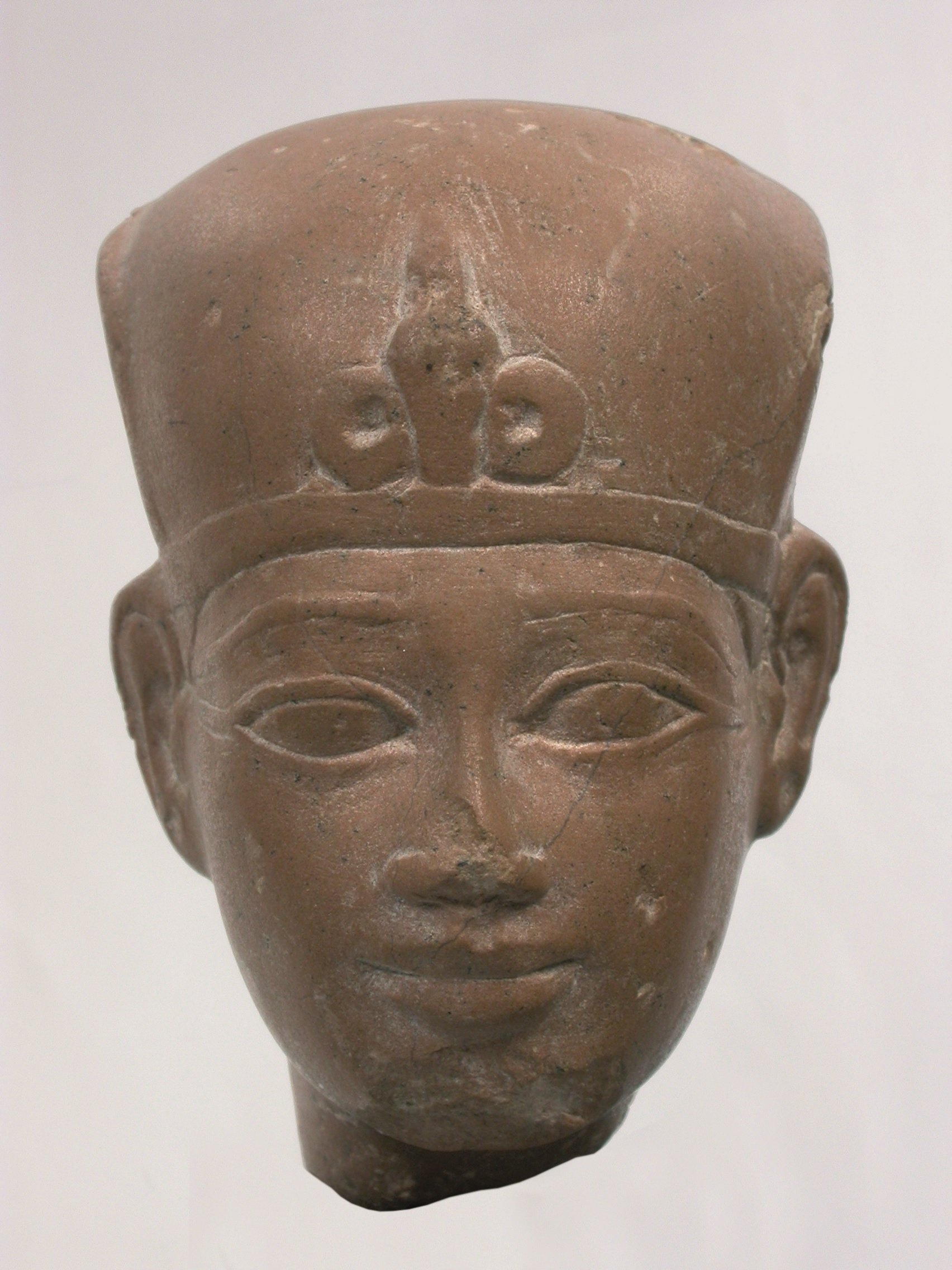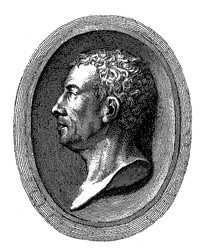Ägyptisch, 26. oder 30. Dynastie
Die kleine Büste zeigt einen ägyptischen König, erkennbar an der speziellen Krone. Die Kinnpartie und ein Teil der Nase sind abgebrochen. Das Gesicht ist sehr weich modelliert. Augen, Nase und Mund sind kaum in die Oberfläche eingesenkt. Der Mund besitzt volle, geschwungene Lippen, die sehr sparsam modelliert sind. Dominant sind die großen, mandelförmigen Augen.Die Ohren sind weit zurückgesetzt. Der Kopf besitzt eine große Stirnpartie, darüber ist ein breites Band sichtbar, das den unteren Rand der Krone bildet. Diese besitzt die Form einer Kappe. An der Vorderseite, über dem Band richtet sich eine Uräusschlange auf.
en

